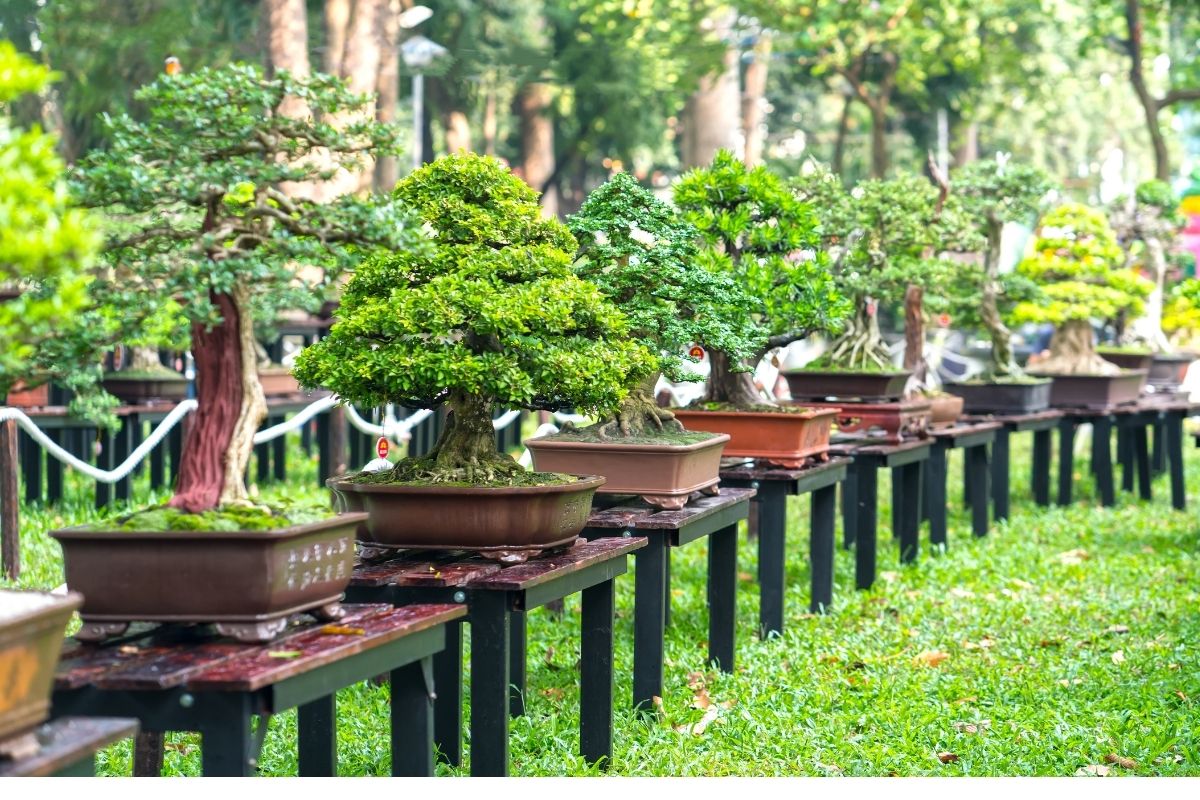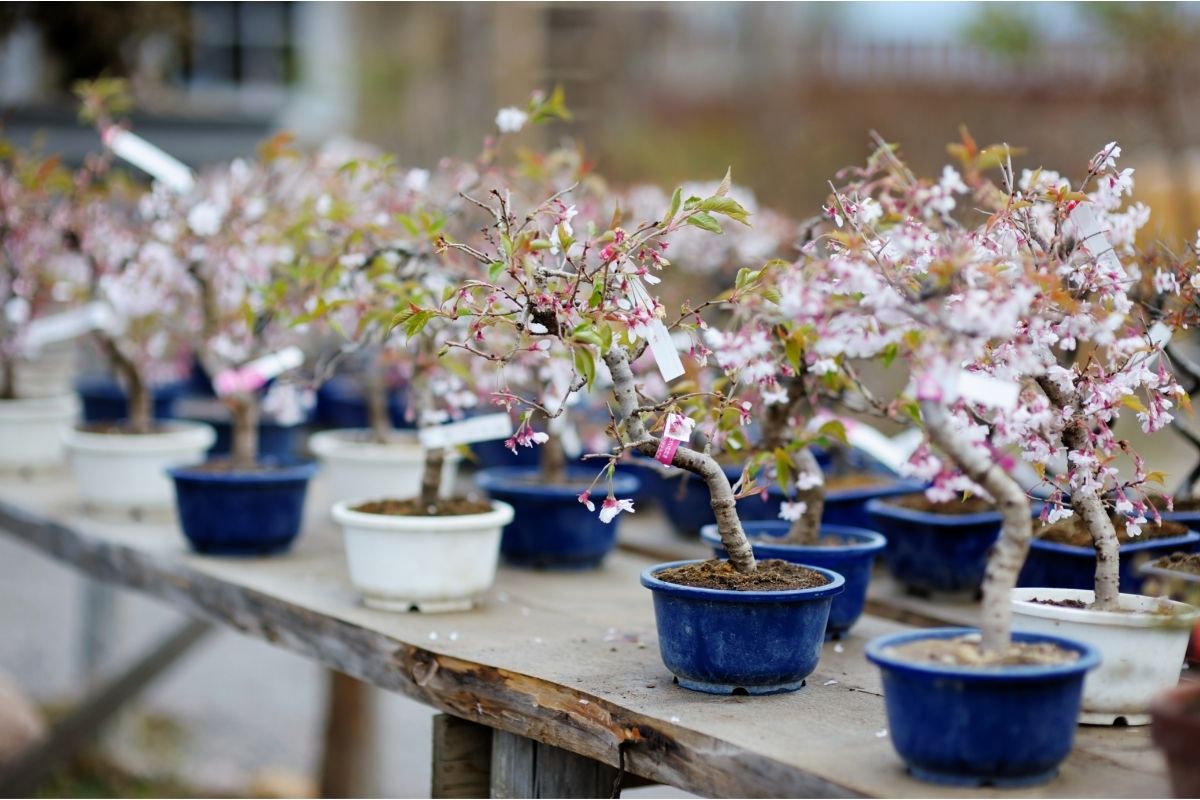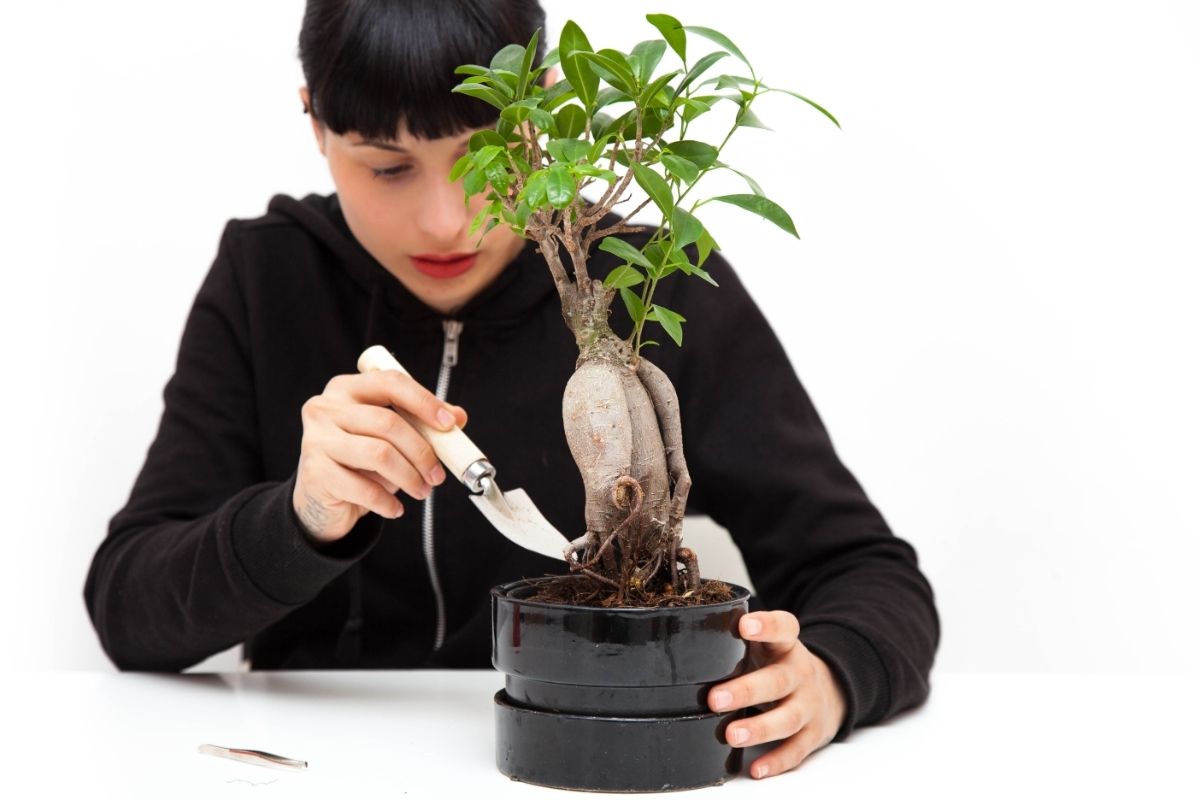There are a lot of things that can affect how much a bonsai tree costs and some can be incredibly expensive whilst others are very affordable, so it mostly comes down to you and what you are looking for in a bonsai tree.
We will talk about what a bonsai tree is in more detail, how much they are, and how to care for it once you get your hands on one so that you can give it a long and healthy life!

What Is A Bonsai Tree?
The history of the bonsai tree spans thousands of years and even though they are often associated with Japan, bonsai trees originated in China where they were reserved only for the elite and Chinese royalty.
In China, bonsai trees were known as ‘penjing’ and were made into art by manipulating the branches to create different shapes which carried different meanings.
This art caught the attention of Japanese monks in the 6th century who began visiting China and decided to bring some back, thus the bonsai was born.
The Japanese made the bonsai art more simplified than what it was in China and the trees soon became a symbol of spirituality and represented harmony, balance, and the simplicity of life.
Bonsai trees can reach three feet but usually do not get any bigger than that as they are designed to look like a large tree in the way that they are shaped.
They are grown from the seeds of regular-sized trees but what makes them so small is done through selection, careful pruning, and special cultivation.
The fact that they are essentially miniature trees also means that they share a lot of the same benefits. Bonsai trees are able to release oxygen, purify the air, flower, grow new branches, and even bear fruit.
How Much Are Bonsai Trees?

You can get bonsai trees that are as cheap as $20, but you must note that you will likely have a seed of a bonsai tree, and it may not even be of good quality.
This means that you will have to wait a long time for the tree to take shape, and you will have to put in a lot of time and effort.
On the other hand, some bonsai trees can cost in the hundreds of thousands range with the most expensive bonsai tree ever costing two million dollars.
Essentially, when it comes to bonsai trees you get what you pay for.
There are some fundamental aspects of the bonsai tree that tends to make them more expensive than a lot of other plants.
One of the biggest reasons for the price tag is that bonsai trees are quite rare because they take a lot of time to grow, require experienced owners, and lots of care.
Another thing that makes bonsai trees expensive is the fact that they take a long time to grow with most only growing about a millimeter a year.
It is said that it can take up to a decade for a bonsai tree to achieve a satisfying shape and be healthy.
Bonsai grow slowly because a lot of their nutrients are restricted by the frequent pruning that is done to make sure that it meets the visual standards of a bonsai tree.
This means that the energy that the bonsai puts into creating new shoots is wasted as they are removed almost straight away.
The type of bonsai tree also affects how expensive it is as the ones that are rarer and challenging to grow will cost more. Hickory and money trees are very difficult to transform into bonsai trees.
It will be difficult to prune anything with a huge taproot and large leaves. A variety of bonsai tree that is easier to grow and therefore cheaper is the ficus.
The quality of bonsai trees is by far the most important aspect that influences their pricing.
Root distribution, trunk shape and movement, branch placement, ramification, and silhouette are all characteristics that influence quality. The quality of the pot is also essential.
Pots used for bonsai trees are quite specific as they need to be shallow enough to restrict root growth. They are also usually handmade but are quite plain because they shouldn’t take any of the focus off of the tree.
The age of the tree has a lot of influence on its price with those that are older fetching a bigger price tag.
This is because, by this time, the tree has established itself and has the attractiveness of a bonsai tree, you don’t have to put in as much work after this stage, but you will still have to care for it regularly.
As well as this, the older the bonsai tree, the larger it is which also typically drives up its price because you can fast-forward five or so years and jump to the part where you have a beautiful tree.
If the bonsai tree is in good condition, it will cost more than one that is having some issues, but some people like to take on the challenge and give the bonsai an opportunity to get better as part of the challenge.
Where the bonsai came from affects the price with those that come from Japan being the most expensive.
Korean bonsai trees tend to be a bit more affordable but are still more expensive than those from Europe and China.
How To Care For A Bonsai Tree?

Even though bonsai trees are not as hardy as a lot of other indoor plants, if you pay attention to it and follow the basic care guidelines, they should flourish.
Choosing the best location for your Bonsai trees can be difficult because various criteria such as the local climate and time of year must be considered.
The type of bonsai tree you have as well as if it’s an indoor or outdoor tree should also be thought about.
If you have an indoor bonsai tree, the best place to put it is by a south-facing window with access to a lot of light as this is vital for your tree.
For the most common types of indoor bonsai trees such as Carmona and Ficus, you will need to make sure that they have high humidity which can be done by placing them on a humidity tray.
An area inside the house that doesn’t have a lot of fluctuation in temperature is best for indoor bonsai trees.
If you have outdoor plants, there is a general rule that advises you to place them in a bright, well-lit area of the yard.
However, if you have very hot summers, you may have to offer some shade to the bonsai in the afternoons.
During the winter, you might also have to protect them against the cold but not too much as this can weaken the tree.
How much you should water your bonsai tree also depends on what kind of bonsai it is, its size, pot size, the time of year, climate, and the soil mixture.
Having said this, there are some basic guidelines that you can follow to help you figure out how often the bonsai tree is needing to be watered.
Don’t water your tree if the soil is still wet, but also don’t allow it to dry out. Check the soil moisture with your fingers around one centimeter deep.
With experience, you will be able to read the signs of when your bonsai tree is needing to be watered just by looking at it.
Fertilizing on a regular basis during the growing season is essential for Bonsai’s survival and growth.
Trees can normally expand their root system in search of nutrients, but because Bonsai are constrained to the relatively tiny pots in which they are planted, they require proper fertilizer to replace the nutritional content of the soil.
Repotting It is critical to repot your Bonsai on a frequent basis to keep it from becoming pot-bound and starving to death.
A tree gets pot-bound when it uses up all the available nutrients in the soil and the roots grow to fit the shape of the container.
The trees stop growing due to a shortage of room and nutrition, and if nothing is done, they will die. Therefore, repotting your Bonsai will replenish the tree’s nutrients, allowing it to flourish and grow.
As far as bonsai trees go, these are just the basic rules that you will need to follow to make sure it stays alive, but there is much more that goes into taking care of them.
You can find out more information by researching the particular type of bonsai tree so that you can learn of its specific needs.
Summary
Bonsai trees have a lot of history and symbolism connected to them which is why they are so valued in today’s society.
There are a lot of factors that influence how much a bonsai tree will cost such as age, size, quality, pot, and more.
They take years and years to grow into the unique shapes and colors that we recognize them for having and some people love to take on the challenge and will pass their bonsai trees down through the generations which is almost impossible to put a price on.
Editor’s Recommendations
Dying Money Tree: Important Steps and Tips To Revive Your Plant







